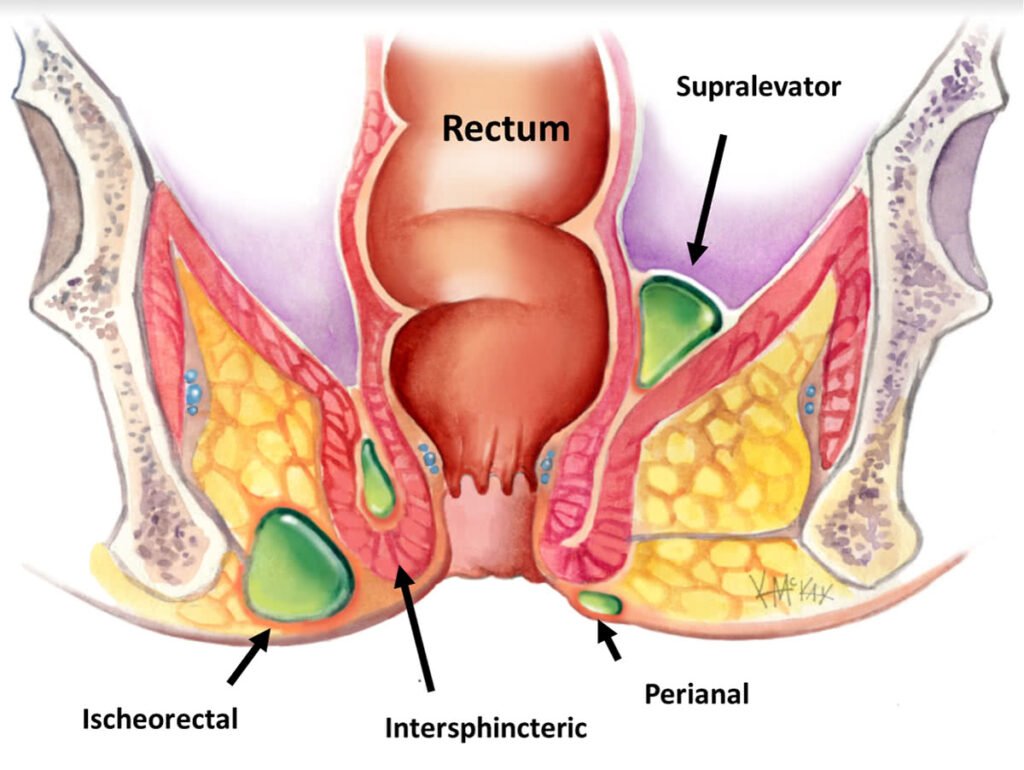About Perianal Abscess Treatment.
About Perianal Abscess Treatment Surgical Care Experts is dedicated to providing exceptional care throughout your entire perianal abscess treatment journey. We understand the discomfort and pain associated with this condition. Our team of experienced professionals will manage your care from diagnosis to post-operative recovery, ensuring a successful outcome and getting you back to feeling your best.
Perianal Abscess Treatment

How Perianal Abscesses are Diagnosed
Advantages of End-to-End Surgical Care
At Surgical Care Experts, we manage your entire perianal abscess experience:
- Pre-operative consultations: We discuss your condition, treatment options, and answer any questions you may have to alleviate anxiety.
- Surgical expertise: Our qualified surgeons utilize minimally invasive techniques whenever possible to minimize discomfort and scarring.
Post-operative care: We provide comprehensive follow-up appointments to monitor your healing, manage any pain, and prevent recurrence.
Symptoms of Perianal Abscess
Common symptoms of a perianal abscess include:
- A red, swollen, and tender bump near the anus
- Throbbing pain in the anal area
- Difficulty sitting or walking
- Fever and chills (in some cases)
Causes of Perianal Abscesses
Perianal abscesses most commonly develop from infected anal glands. These glands can become blocked with hair or debris, leading to infection and abscess formation. Other factors that can contribute include:
- Crohn’s disease or ulcerative colitis (inflammatory bowel diseases)
- Trauma to the anal area
- Weakened immune system
When to See a Doctor
If you experience any symptoms of a perianal abscess, consult your doctor promptly. Early diagnosis and treatment can help prevent complications and ensure a faster recovery.
Risk Factors for Perianal Abscesses
Certain factors can increase your risk of developing a perianal abscess, such as:
- Crohn’s disease or ulcerative colitis
- Frequent anal intercourse
- Poor hygiene
- Obesity
Complications of Perianal Abscesses
While uncommon, potential complications from perianal abscess surgery include:
- Infection
- Bleeding
- Recurrence of the abscess
- Fistula formation (an abnormal connection between the abscess and the skin surface)
Prevention of Perianal Abscesses
Maintaining good hygiene is crucial for preventing perianal abscesses. This includes:
- Keeping the anal area clean and dry
- Wiping from front to back after using the toilet
- Avoiding tight-fitting clothing
Patient Testimonials



FAQ's
Not always. In some cases, particularly for small abscesses, your doctor might try antibiotics to fight the infection. However, surgery is generally the most effective treatment for draining the pus and allowing the abscess to heal properly.
Perianal abscess surgery is typically an outpatient procedure performed under local anesthesia. The surgeon will make a small incision to drain the pus and clean the area. In some cases, packing may be inserted to keep the wound open for drainage.
You might experience some discomfort after surgery, but pain medication is typically prescribed to manage it effectively. Sitz baths (warm baths to soothe the anal area) can also help with pain and promote healing.
Recovery time varies depending on the size and severity of the abscess. Typically, it takes 1-2 weeks to heal, with most people returning to normal activities within a few days. Strenuous activity may be restricted for a longer period.
Maintaining good hygiene is key. This includes keeping the anal area clean and dry, wiping properly after using the toilet (front to back), and avoiding tight-fitting clothing that can trap sweat and irritation.
Minimally invasive techniques used for perianal abscess surgery typically result in minimal scarring. However, some degree of scarring is possible and can vary depending on the size and location of the abscess.


